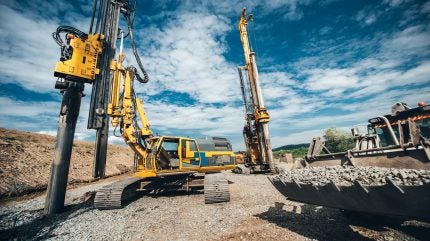
Giyani Metals has begun a 2,500m infill drilling programme at its K.Hill battery-grade manganese project in Botswana.
The initiative will offer the basis for an updated mineral resource estimate (MRE) for inclusion in the company’s planned 2025 DFS.
It aims to define sufficient measured mineral resources for the initial five years of mining operations, which are typically covered by project finance debt facilities.
For this process, the company will use a combination of RC and DD techniques to optimise recoveries and maintain cost efficiency.
RC drilling will be used for collaring the holes and initial casing, as it is considered to be more cost-effective than DD.
Meanwhile, DD will provide superior sample recovery for analysis and density test work.

US Tariffs are shifting - will you react or anticipate?
Don’t let policy changes catch you off guard. Stay proactive with real-time data and expert analysis.
By GlobalDataThe data obtained from this drilling programme is expected to underpin an updated MRE to be included in the DFS.
The additional information will also enhance Giyani’s understanding of the K.Hill deposit, allowing for more accurate modelling of the ore grade and the elemental profile of the ore, which will enable more precise forecasting of the production profile.
Last year, around 100 tonnes of mineralised material from K.Hill was transported to Johannesburg.
This material is anticipated to be processed into high purity manganese sulphate monohydrate at the demo plant in the second half of 2024.
The same K.Hill ore will serve as feedstock for the commercial plant, which is due to be constructed in Botswana and is expected to start ramping up to full commercial-scale production in 2027.
Giyani president and CEO Danny Keating said: “As we look to ready the company for a final investment decision in 2025, we have initiated a number of workstreams to further de-risk the project for potential financiers.
“The drilling programme is expected to take a significant portion of the indicated mineral resource into the measured mineral resource category.
“This will give greater confidence in the mine plan during the likely debt repayment period and also gives us the opportunity to potentially declare a proven reserve as part of the upcoming definitive feasibility study.”



